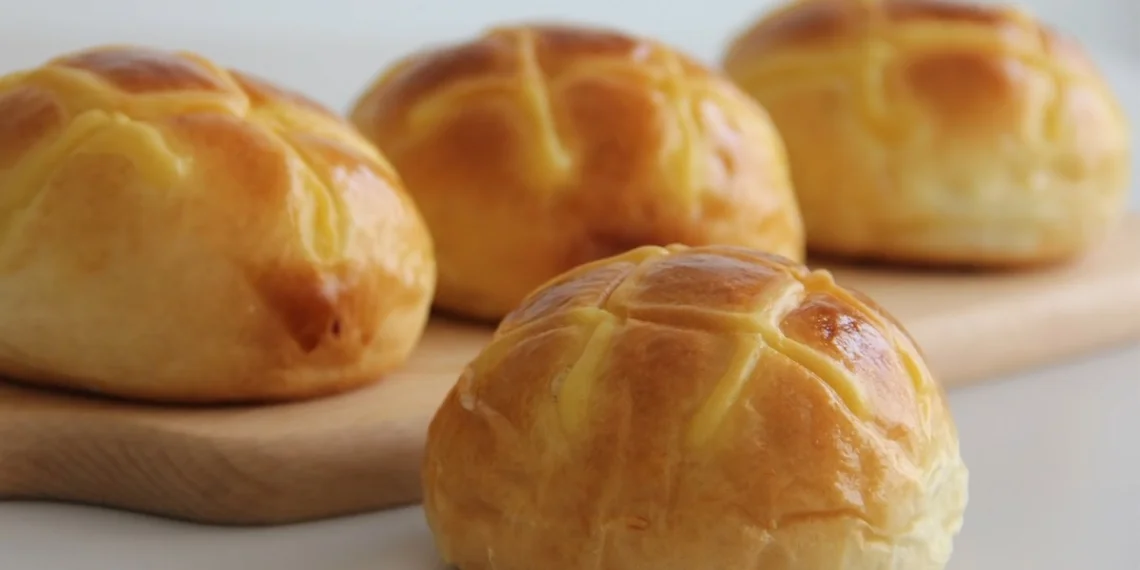-
Preparation
10 minutes
-
Cooking
2 hours 30 minutes
-
Difficulty
Medium
In addition to being used with fast food, potatoes are also used to make delicious baked goods. Join TasteVN in the kitchen to discover this simple recipe for making soft, smooth, and attractive potato bread!
Ingredients for Potato Bread For 8 pieces
Bread flour 250 g (type 13 flour) Instant yeast 1 teaspoon Mashed potatoes 50 g Chicken egg 1 piece Fresh milk 80 ml Unsalted butter 30 g Egg yolk 1 piece All-purpose flour 1 tablespoon Vanilla extract 1/2 teaspoon Caster sugar 50 g (Can substitute with fine powdered sugar)
How to choose good potatoes
- Choose firm, heavy, intact potatoes with a smooth skin surface.
- Golden potatoes will be tastier and sweeter than those that are slightly white.
- Avoid shriveled potatoes that feel soft when squeezed or have black eyes, are rotten, or leaking.
- Absolutely do not choose potatoes that have turned green or sprouted as they are extremely dangerous to health.
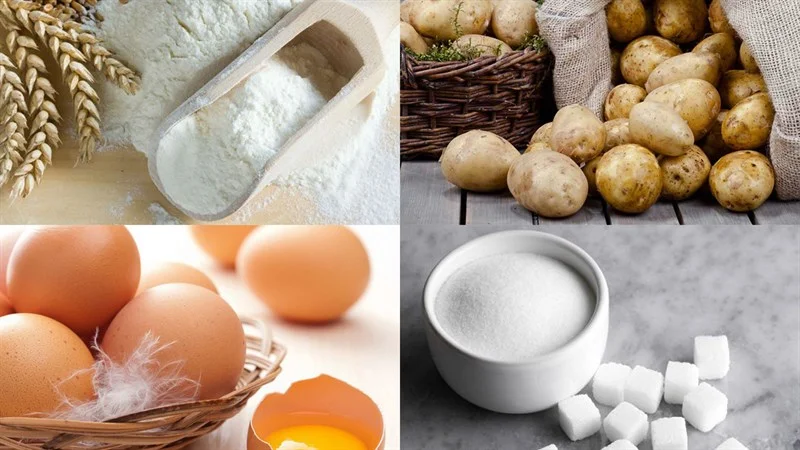
Tools needed
How to make Potato Bread
-
Boil and mash the potatoes
Wash the potatoes thoroughly, use a sharp fork to poke multiple holes on the surface of the potatoes.
Put the potatoes in a pot and boil until soft, then use a fork to mash the potatoes finely.
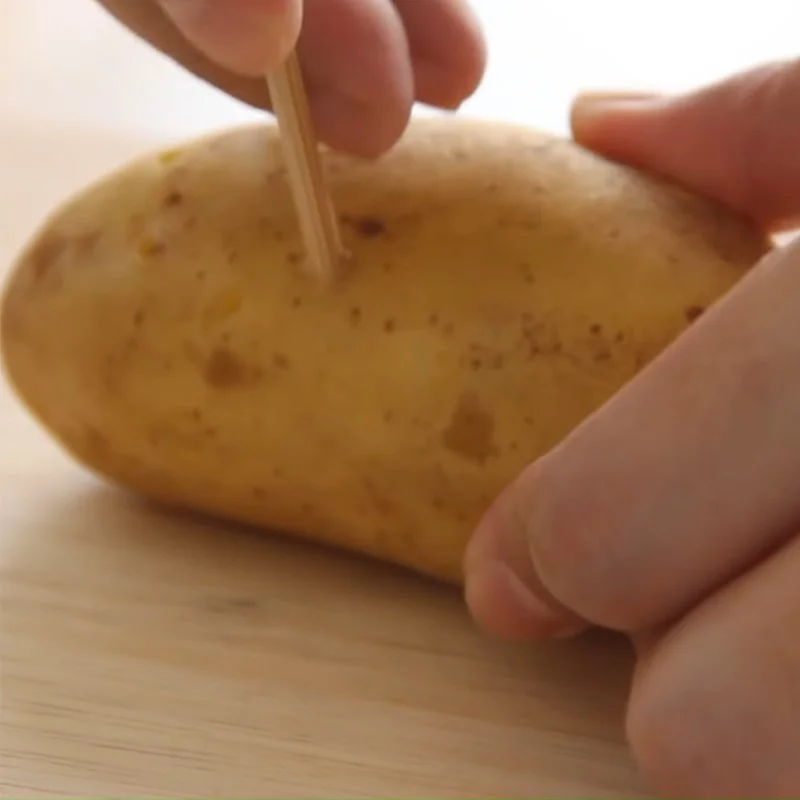
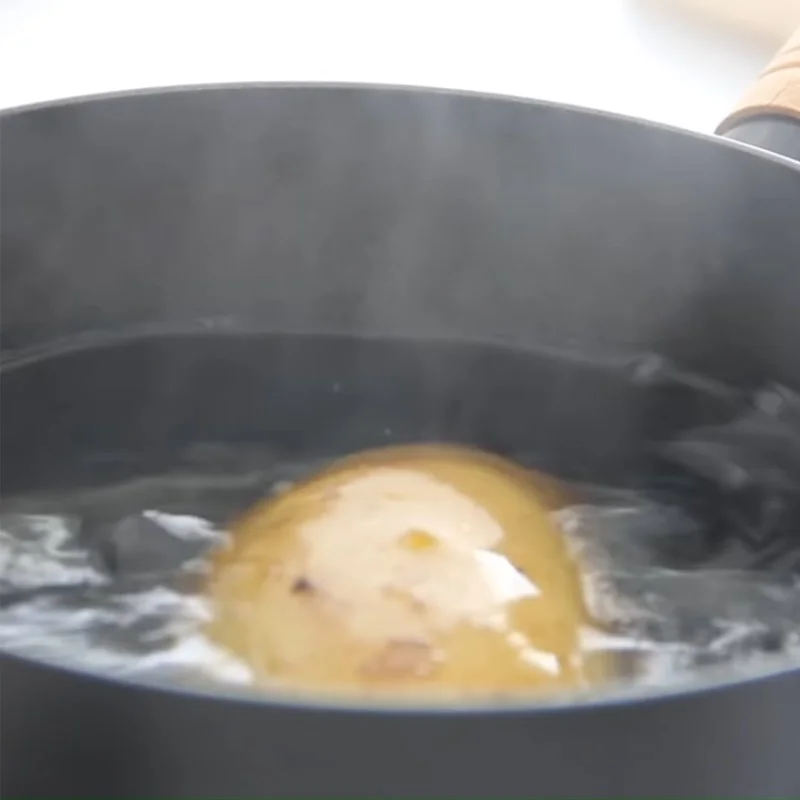
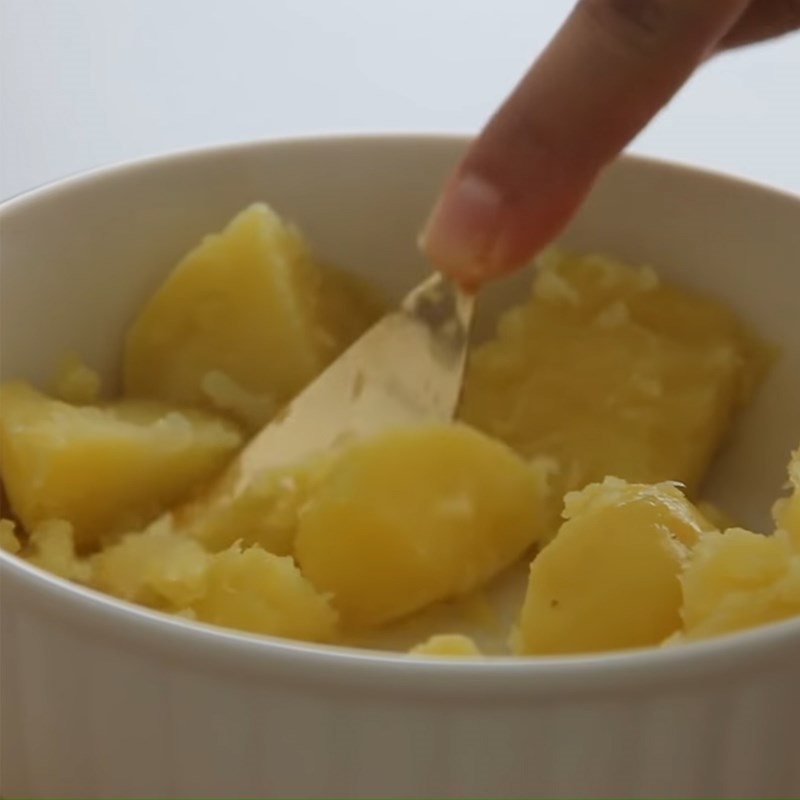
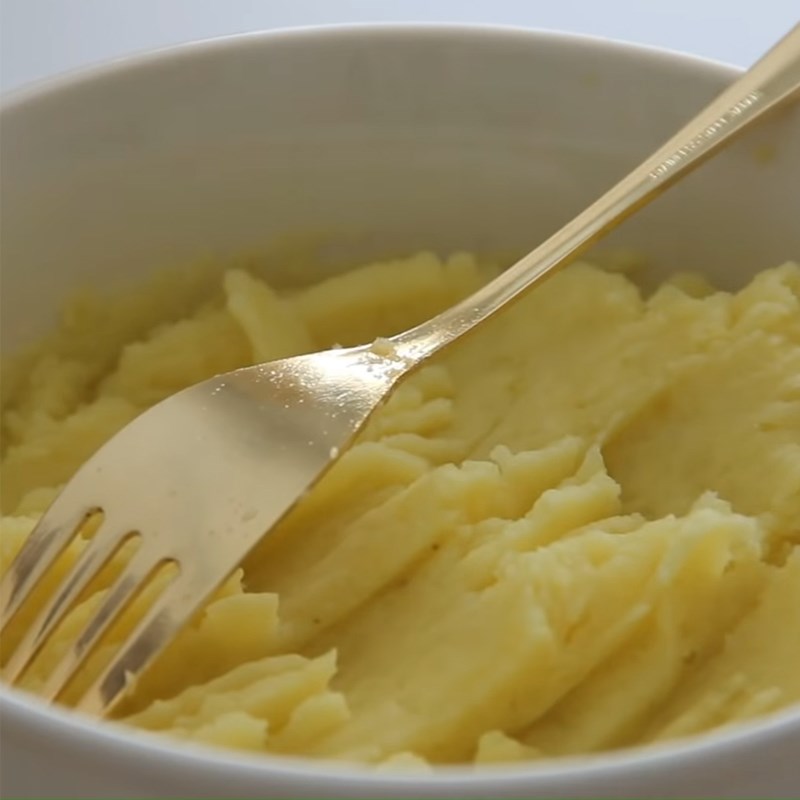
-
Mix the bread dough
Add 250g of finely sifted flour, 50g of caster sugar, 1/2 teaspoon of salt, 1 teaspoon of instant yeast, 50g of mashed potatoes, 1 egg, and 80ml of fresh milk into a bowl. Mix well until the mixture is combined.
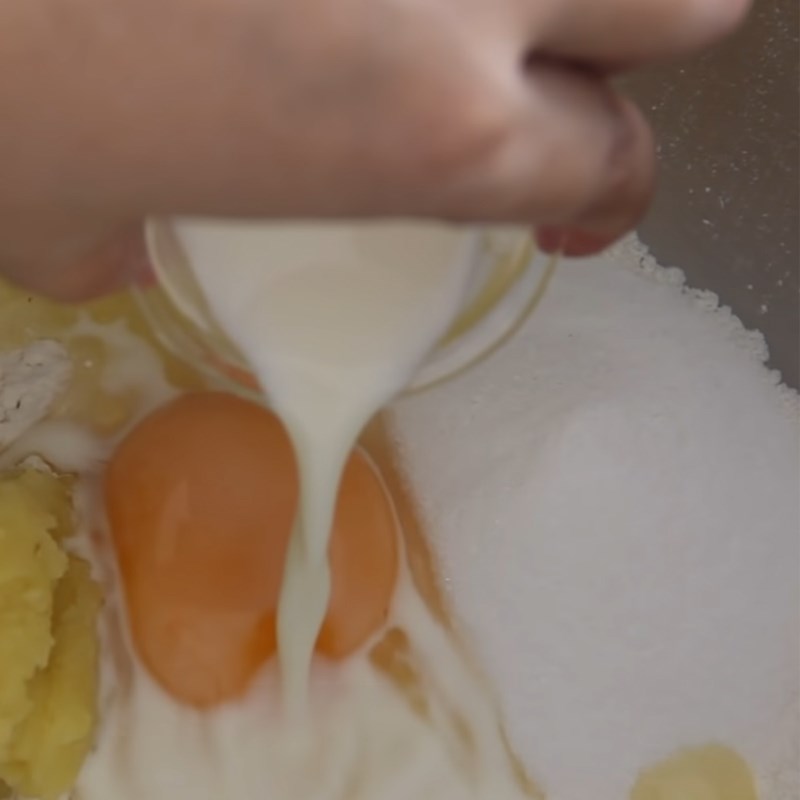
-
Kneading the bread dough
Use a mixer on medium speed for about 10 minutes until the dough is smooth.
Then, add 30g of softened unsalted butter to the bowl and continue kneading until the dough forms a ball, is not sticky to the hands, and can stretch into a thin membrane without tearing.
Note: If you do not have a dough mixer, you can knead by hand using the Folding and Stretching technique. First, fold the dough, then use the palm of your hand to press and stretch the dough away. Note to press and stretch the dough away, not just press down. Next, rotate the dough ball 90 degrees and repeat the two steps above for 15 – 20 minutes.
How to recognize if the dough is satisfactory:
- The dough is smooth and elastic.
- The dough is not sticky to the hands: When pressed, it feels slightly sticky, but when you lift your finger away, the dough does not stick.
- You can stretch the dough into a thin membrane without tearing.
- Check the dough using the Windowpane test. Tear off a piece of dough and stretch it out. If it forms a thin membrane that is not easily torn and light can pass through, it is satisfactory.
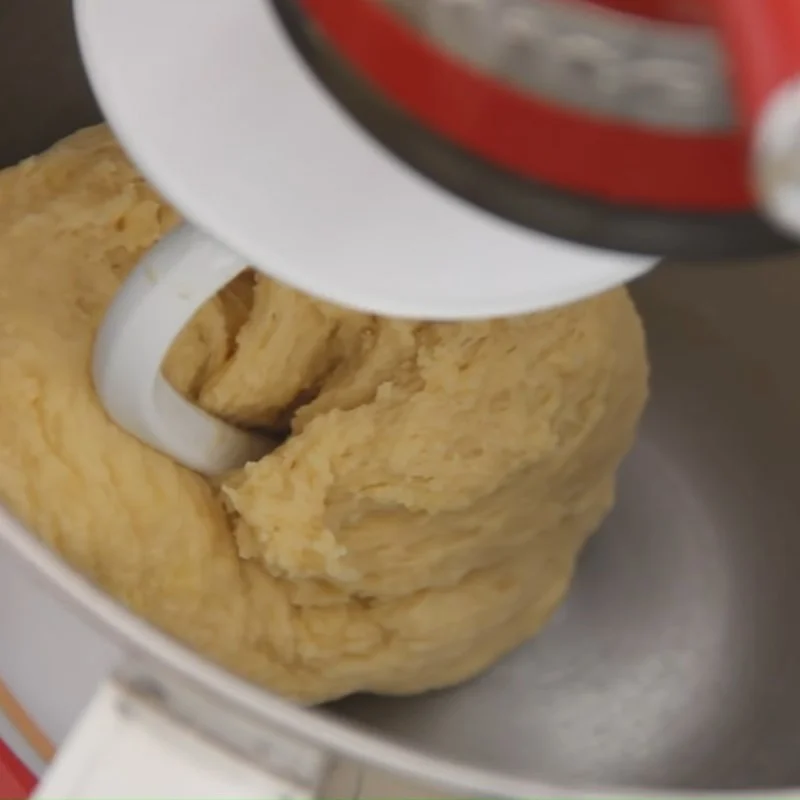
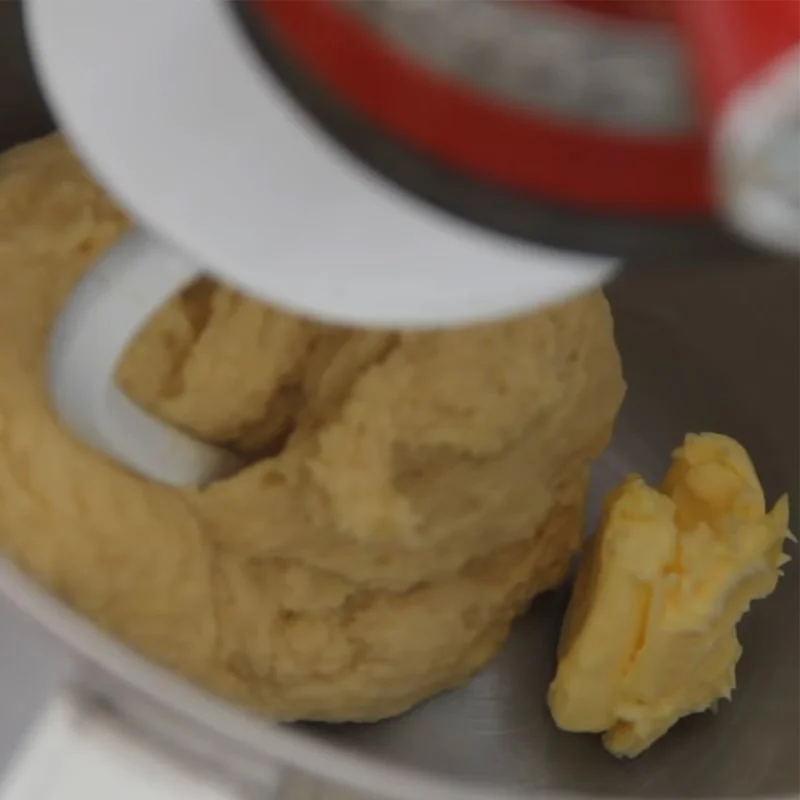
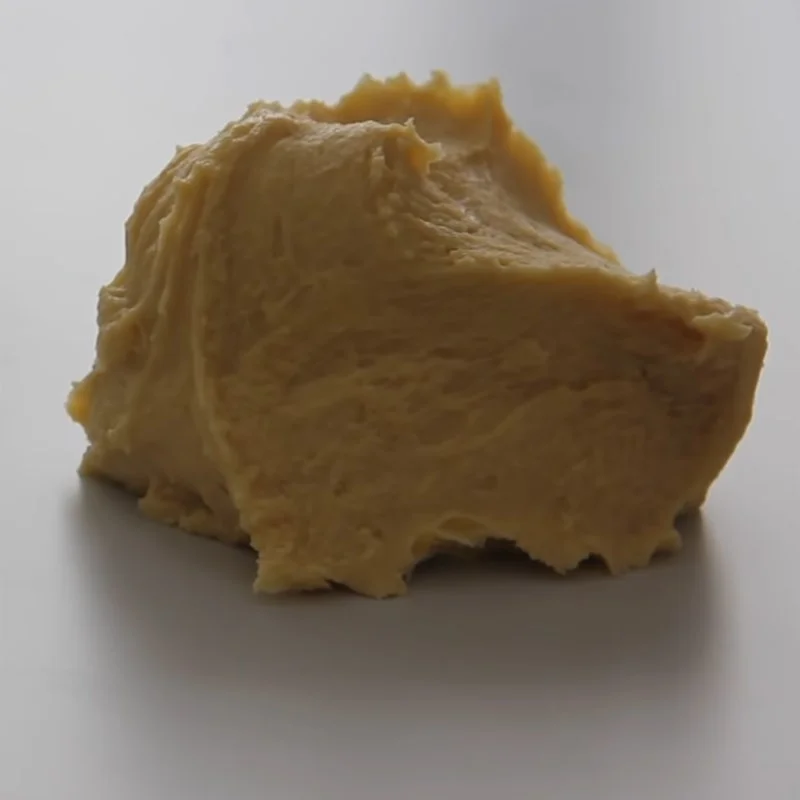
-
Proofing the dough
Transfer the dough to a work surface and knead briefly for about 1 minute, then wrap the dough tightly with plastic wrap and let it proof for 1 hour until it doubles in size. When you press your finger into the dough, it should remain indented and not bounce back, which indicates it is ready.
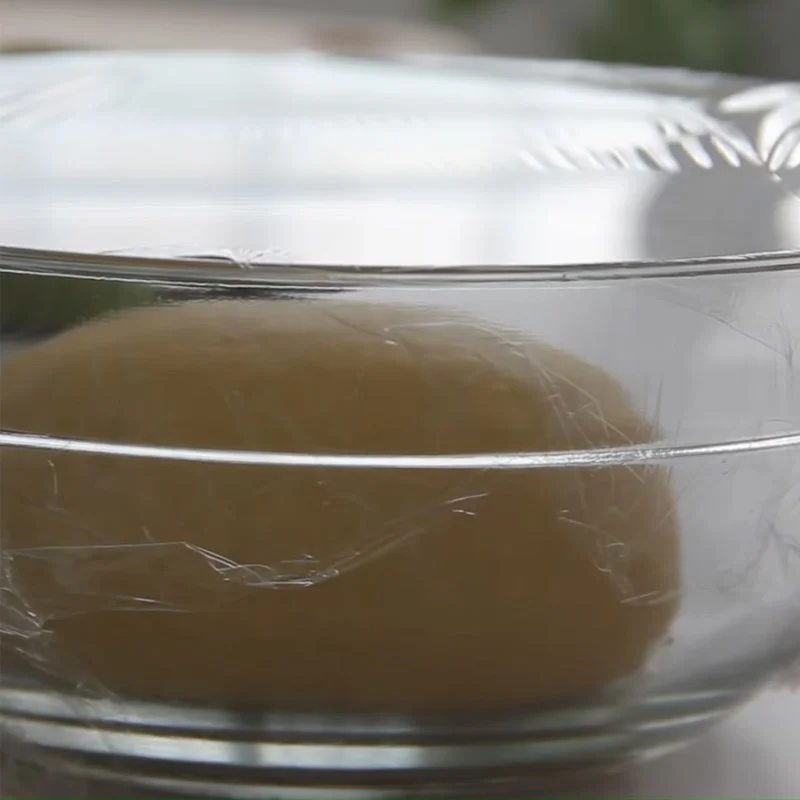
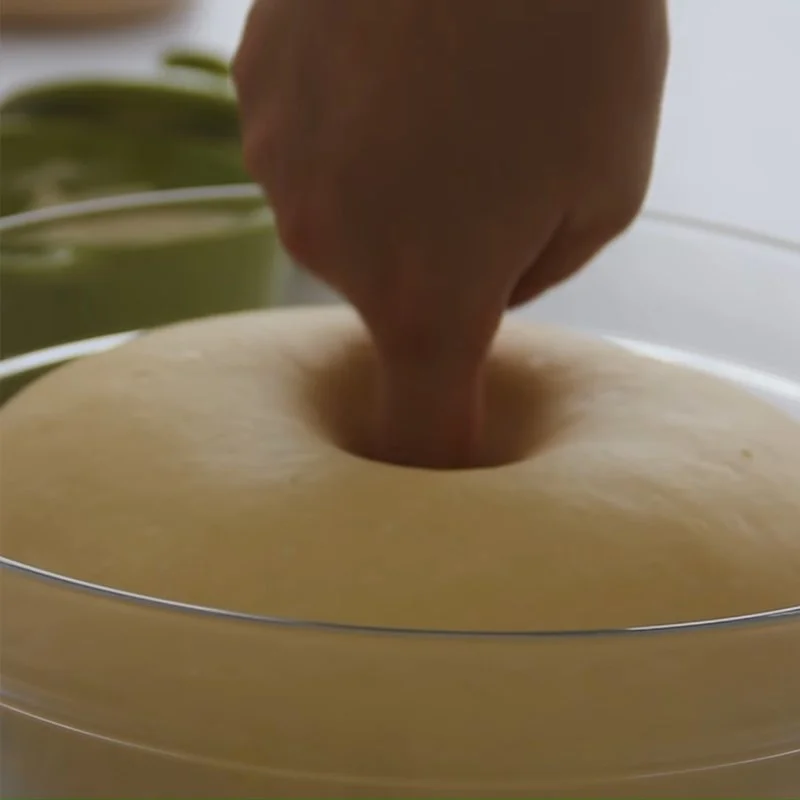
-
Kneading and shaping the bread
Lightly knead the dough, then divide it into several pieces, each weighing 55g.
Roll the dough into balls and let them rest for 1 hour.

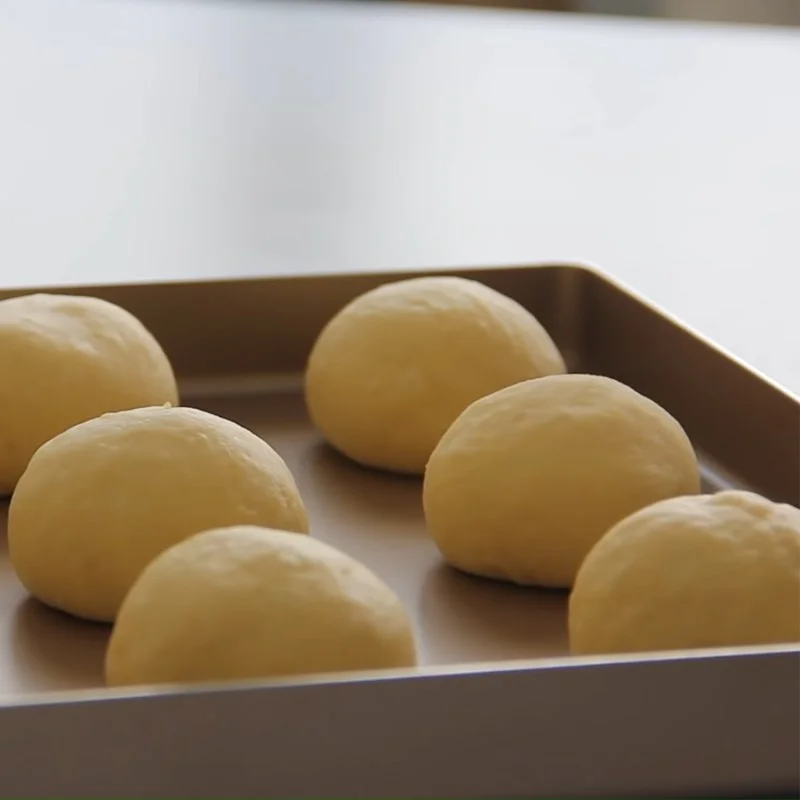
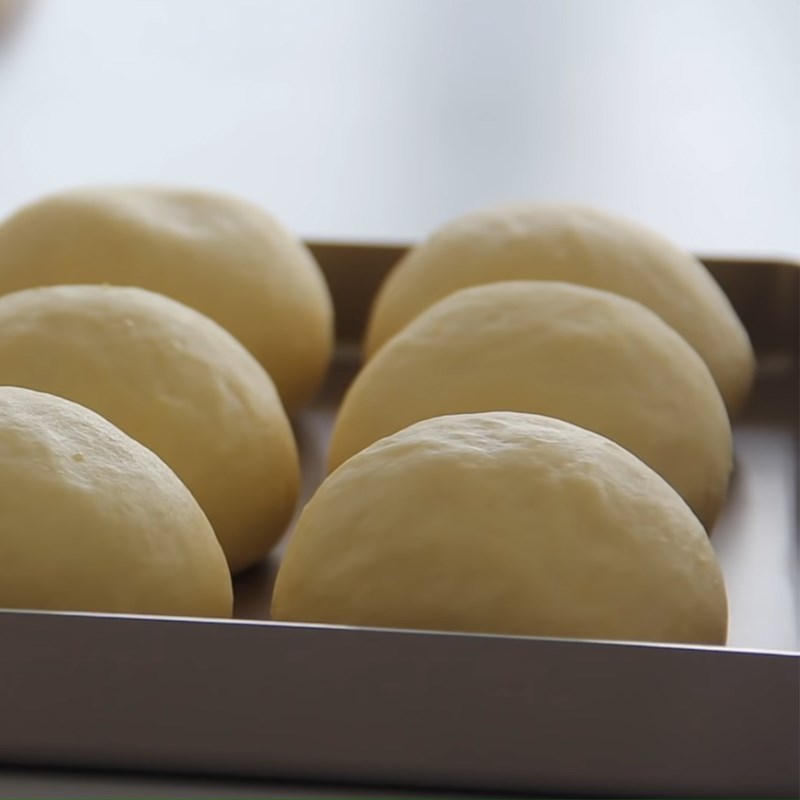
-
Making the dough topping for the bread
In a bowl, add 1 egg yolk, 1.5 tablespoons of caster sugar, 70ml of fresh milk, and 1 tablespoon of sifted all-purpose flour. Use a whisk to mix the ingredients until well combined.
Sift the mixture into a pan, stirring continuously over low heat until the mixture thickens.
Finally, add 1/2 teaspoon of vanilla extract, continue to stir for another 30 seconds, then turn off the heat.
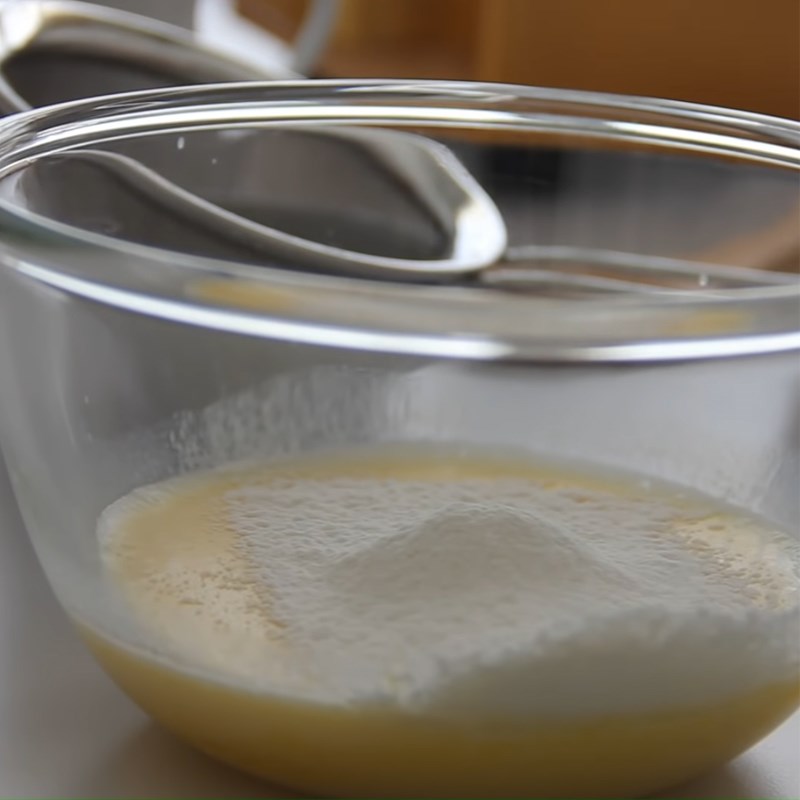
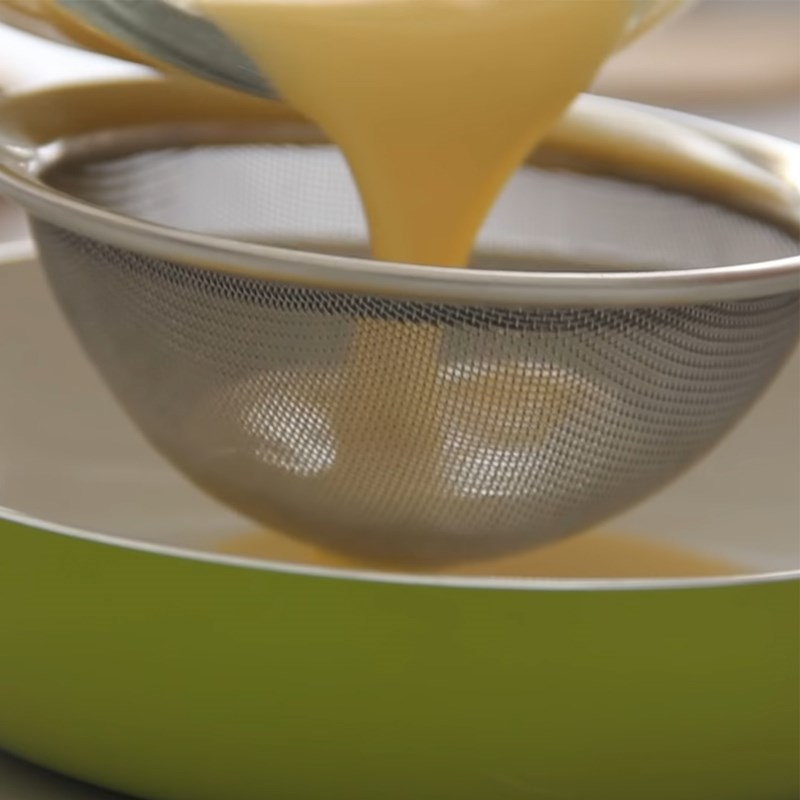
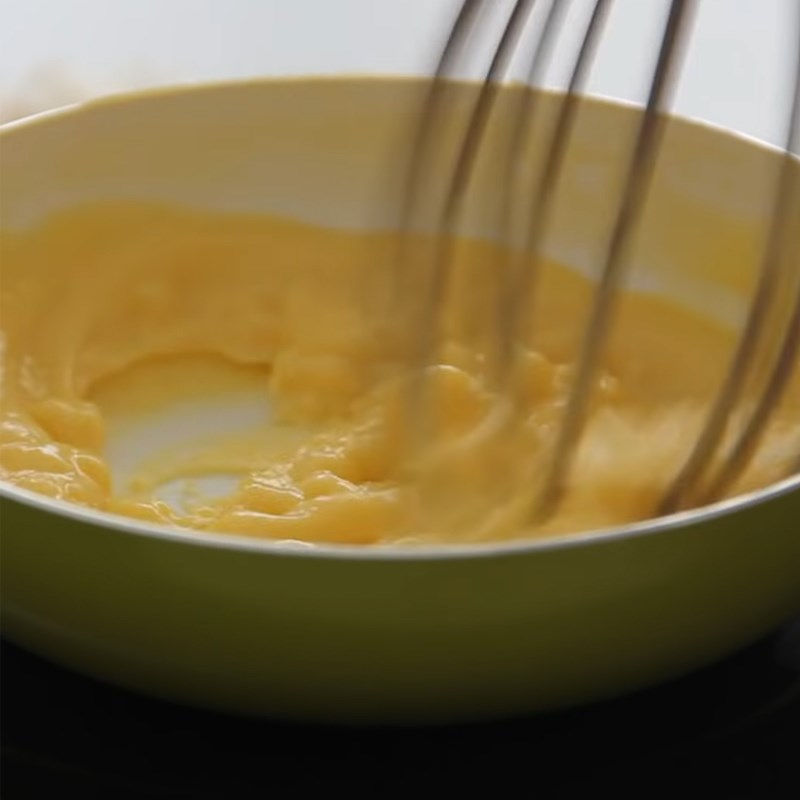
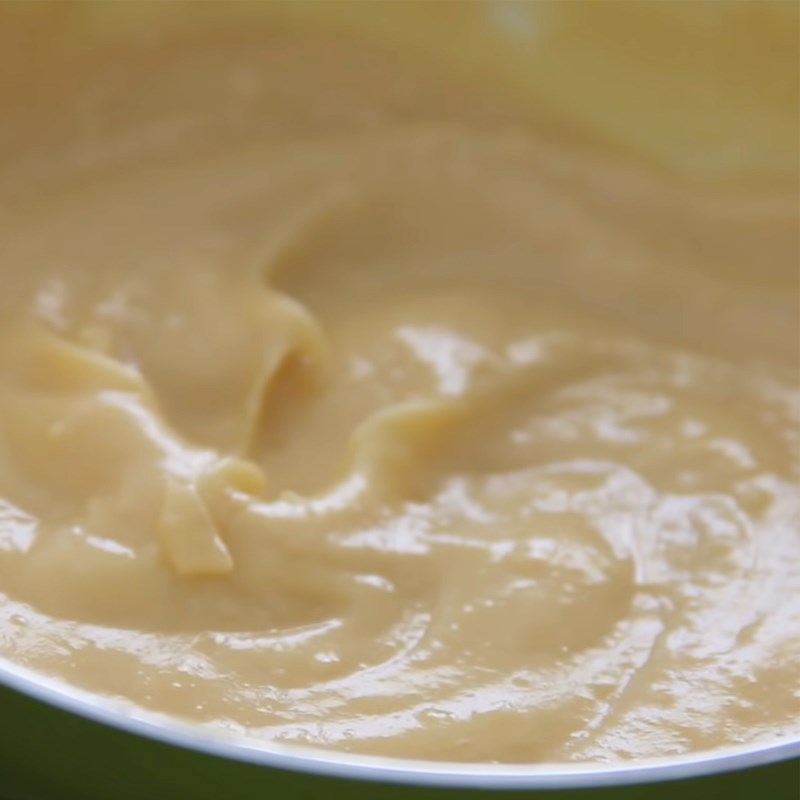
-
Baking the bread
Preheat the oven to 180 degrees Celsius for 10 minutes
Brush a layer of egg yolk on the surface of the bread, sprinkle with a layer of the cooked dough, then place the bread in the oven and bake at 180 degrees for 17 – 20 minutes.
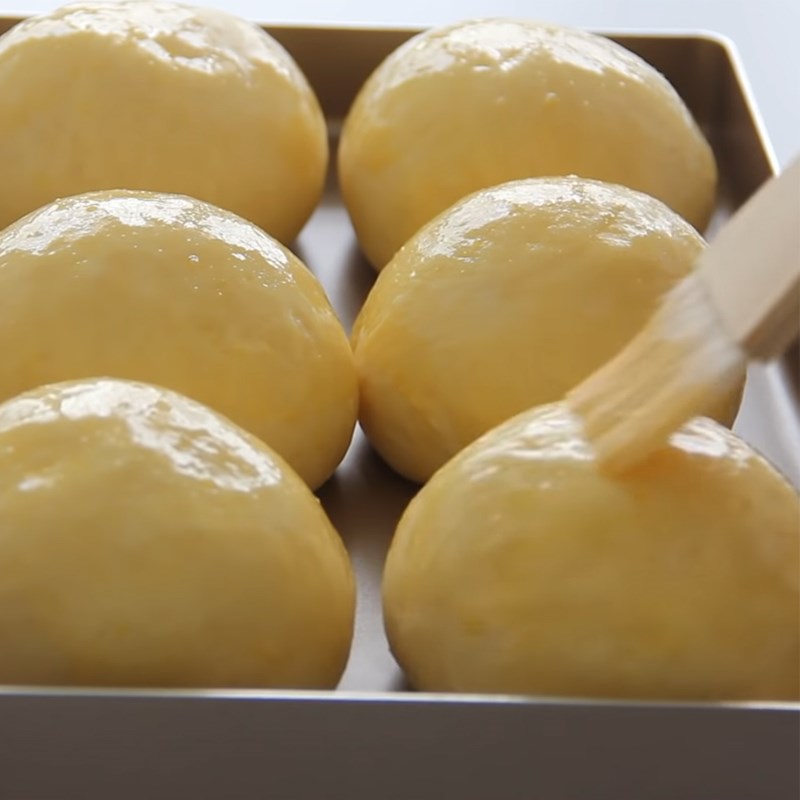
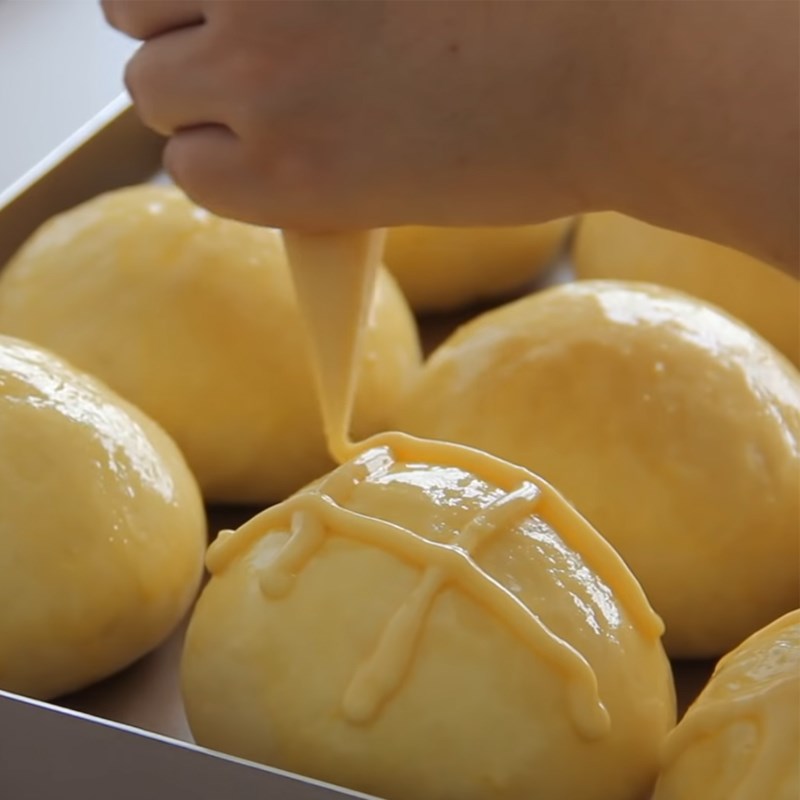
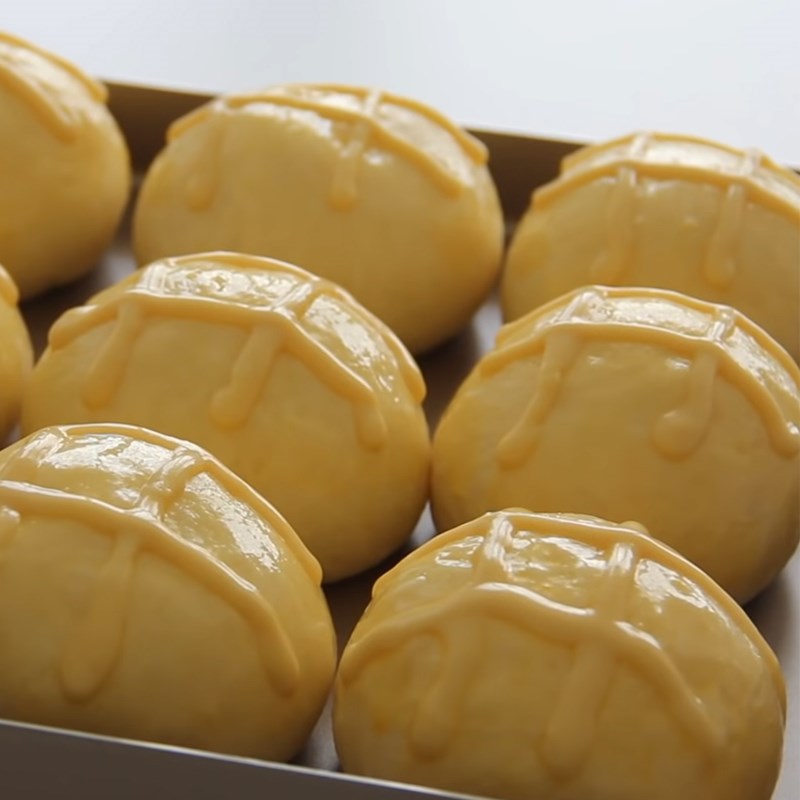
-
Final product
The potato bread is beautifully golden, with each piece being soft and chewy, fragrant with butter, and has a sweet, fatty, and nutty flavor characteristic of potatoes.
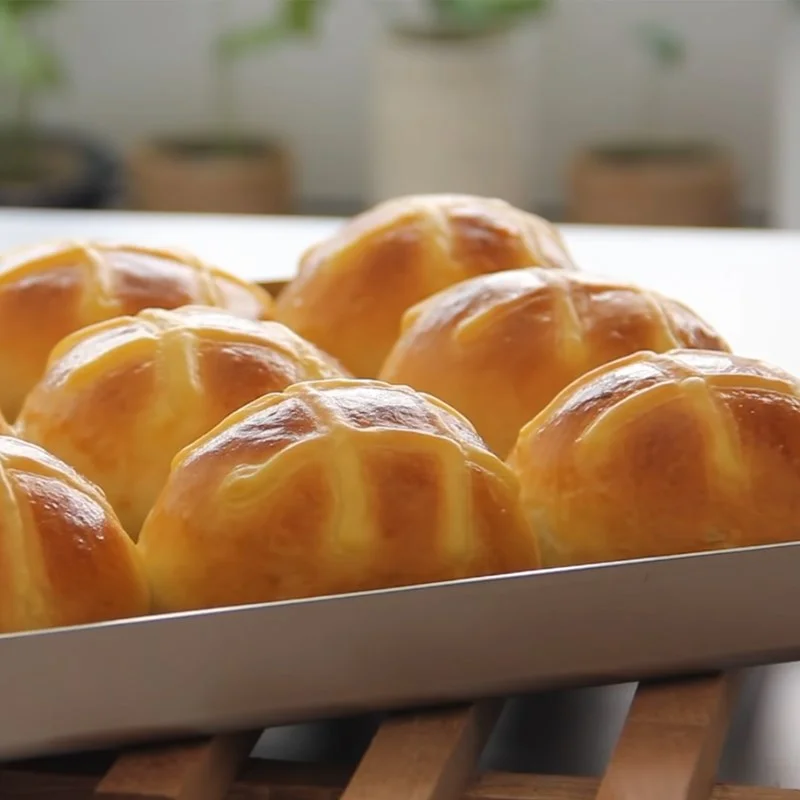
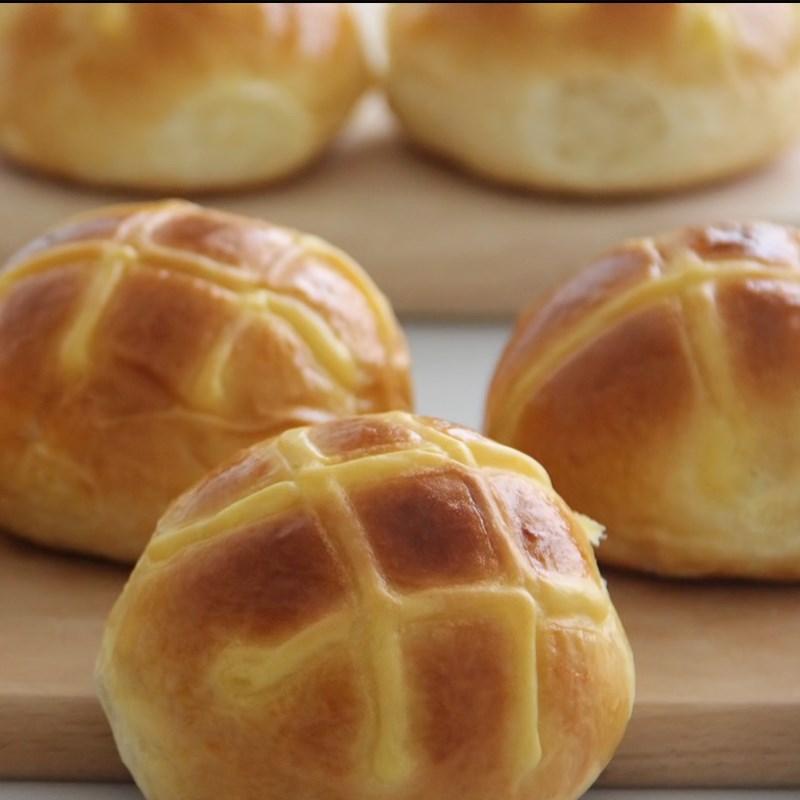
Successful Implementation Tips
- If using instant yeast, it is recommended to use golden instant yeast for rich and sweet breads.
- Do not mix salt and yeast directly together as it will weaken the yeast’s activity and may kill the bread yeast.
- You should knead properly to achieve a chewy and soft bread texture.
- If the dough does not rise after proofing, check the expiration date of the yeast. If the yeast is close to its expiration date, its activity may be weak and it could be dead. To check, you can mix a little warm water at about 30 degrees (not exceeding 37 degrees). Add the yeast and wait for about 15 minutes; if the yeast bubbles like a crab brick, it is still good, and you can use it with confidence.
With the recipe shared above, TasteVN hopes you can successfully make this dish!
*Source of the recipe and images from the Youtube channel Apron
